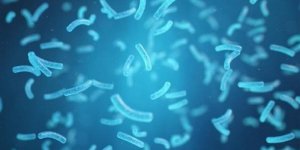| News / Science News |
Molecule created in Brazil helps fight heart failure
A molecule designed at the Institute of Biomedical Sciences of the University of São Paulo (ICB-USB) may increase the quality of life and life expectancy of people suffering from congestive heart failure.
The new molecule—built by ICB in cooperation with the University of Stanford, in the US—paves the way for new medications capable of checking the evolution of the disease more efficiently than the ones available today.
Heart failure is the last stage of a number of cardiovascular diseases—the world’s most fatal disorders.
“Most medications available today for the treatment of heart failure were developed in the 1980s and have their effect outside of the heart cell. We need more effective medicines controlling the critical processes in the affected heart cell, capable of increasing the patient’s lifetime and quality of life. But it’s an arduous task,” said ICB professor and study coordinator Julio Cesar Batista Ferreira.
According to the ICB, the treatment with the synthesized molecule, dubbed Samba, stopped the evolution of heart failure in animals. Mice with heart failure that were treated for six weeks with the molecule showed not only that the disease had been stabilized—as usual with present-day medications—but also the improvement in condition. The specimens presented better capacity to contract their heart muscle.
The molecule was also tested on human heart cells. Results showed that, in addition to checking the deterioration of the disease, cells’ capacity to contract was seen to increase. “Current drugs stop the evolution of the disease, but never make it subside. What we have demonstrated is that, by regulating this particular interaction, the evolution is decreased, and it also brings the condition to a lighter state,” Ferreira said. (Agência Brasil)
YOU MAY ALSO LIKE




